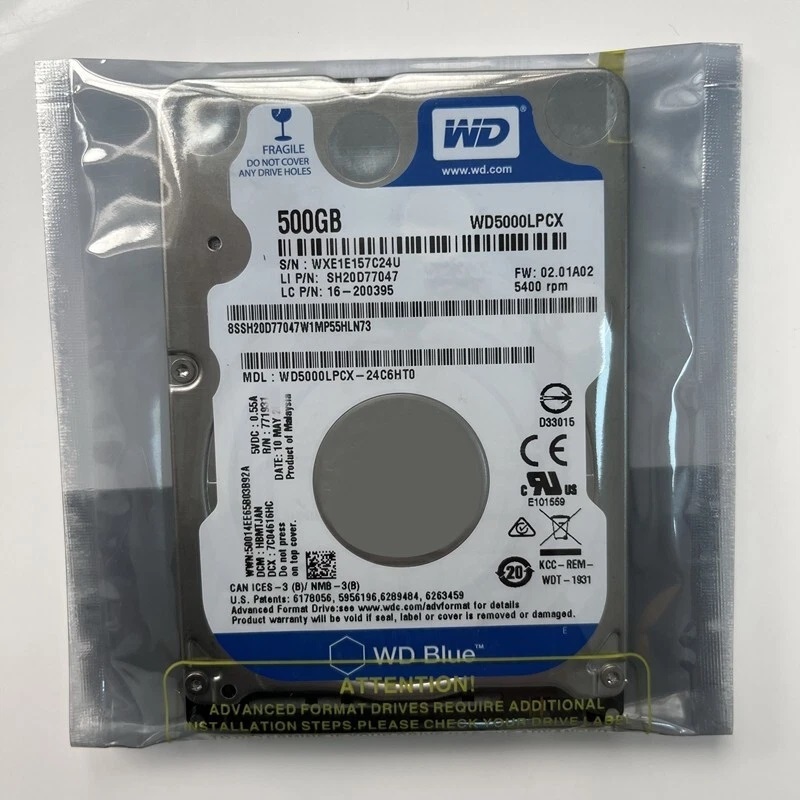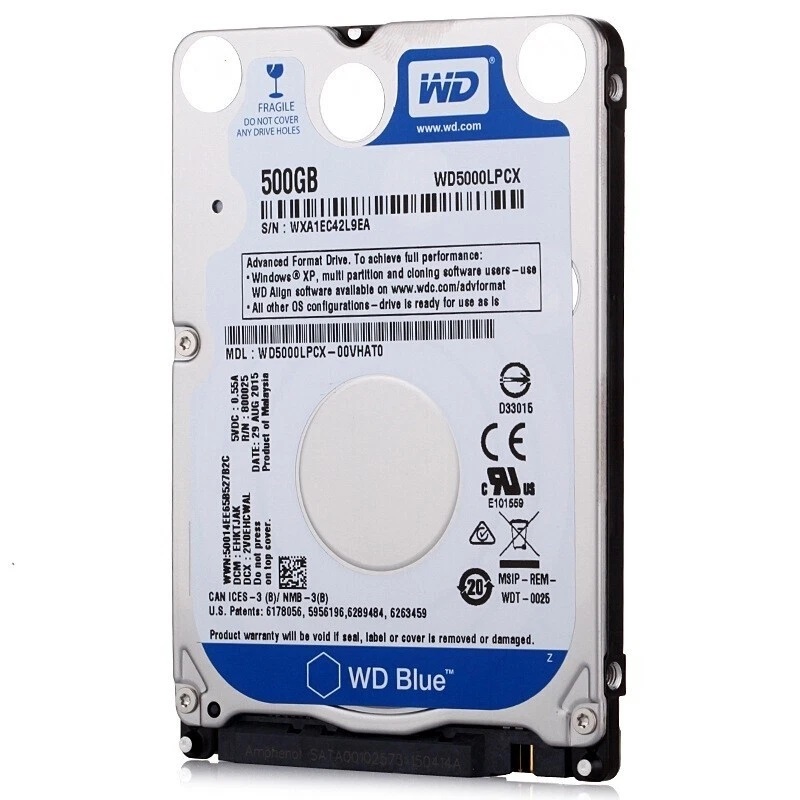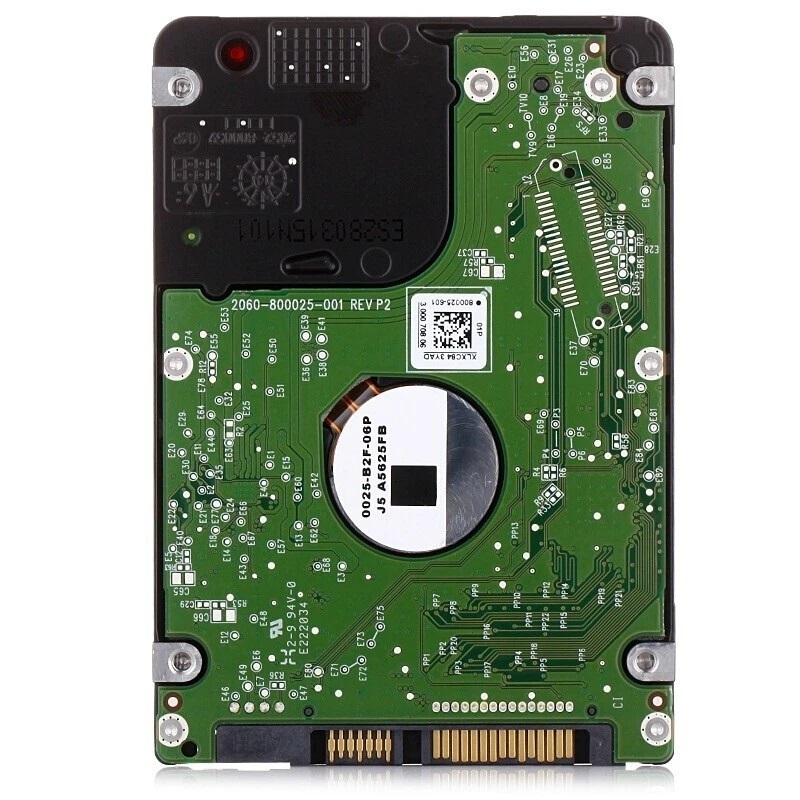Description
The Drive connects via a SATA III (6 Gb/s) interface, which is backward-compatible with SATA II and SATA I. This ensures it can work with older laptops while still offering maximum speed on newer systems. The connector is the standard SATA 7-pin data plus 15-pin power arrangement.
Performance-wise, it spins at 5400 RPM, which prioritizes quiet operation, cooler performance, and low power use rather than speed. Average latency is about 5.5 milliseconds, and the drive usually has a 16 MB buffer/cache for smoothing data transfers. In practice, sequential read/write speeds land in the 100–150 MB/s range, depending on platter density and condition.
Being a 5400 RPM unit, it consumes less power than 7200 RPM models. Idle draw is around 0.2 W, while active usage is closer to 1.4 W, making it suitable for laptops where battery life matters. Noise and vibration levels are low, though refurbished drives may be slightly louder depending on wear.
Durability is typical for laptop drives, with features like NoTouch Ramp Load Technology, which parks the read/write heads off the platter when not in use, and IntelliSeek, which adjusts seek speeds for efficiency. It also supports SMART monitoring, allowing you to track the health of the drive. Many models use Advanced Format with 4096-byte physical sectors and 512e logical reporting for compatibility.
Because this is a refurbished drive, it has been used previously, tested, and reconditioned. Manufacturers or resellers often remap bad sectors and ensure the drive passes basic health tests. However, warranty periods are typically short (around 90 days rather than a year or more), and long-term reliability may not match that of a brand-new disk.
In practical use, this kind of drive works best as secondary storage for files, media, or backups. It can still serve as a boot drive, but it will feel slower than an SSD, especially for loading applications or the operating system.





Reviews
There are no reviews yet.